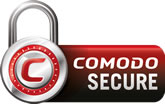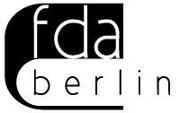Open Range – negotiating a traditional Western Movie in the 21st Century
TABLE OF CONTENTS
Open Range – negotiating a traditional Western Movie in the 21st Century
1. Open Range a Classic Western Movie
1.1 Open Range and its Classic Plotline
1.2 Cinematography
1.3Wilderness and Civilization
1.3.1Nature and Naturalism
1.3.2 The Threat of Civilization
1.4 The Heroes of Open Range
1.4.1 Boss Spearman: the Last of his Kind
1.4.2 Charley Waite: the Traumatized Professional
5. Shooting a Classical Western in the 21st Century
3. Sources
3.1 Bibliography:
3.2. Filmography( in order of appearance in the paper)
3.3 World Wide Web Resources:
Open Range – negotiating a traditional Western Movie in the 21st Century
Cattle being driven through a lush, green valley, a cowboy sitting on his horse with his back to the audience looking out into the open range of America’s Midwest, only limited by the horizon, dark clouds gathering on the far left side of the picture; these are the first images the viewer gets from Kevin Costner’s 2003 Western movie, Open Range . And, in fact, this is all the audience needs, to know what this movie is going to be about. Open Range is made in the tradition of a classic Western. The cinematography of the opening sequence already establishes that. During these long shots the camera literally dwells in the scenery, showing America’s open range, at its best – one could add. The symbolic meaning is conveyed immediately, since the audience recognizes the movie’s frontier setting.
Since the Western genre has undergone a freefall since the late 1970s not only in public interest, which is shown in box office rates, but also in its critical reception, it is interesting, that director Costner refers back to the Western’s grand age in Open Range, even more so if one considers the public, as well as, the critical success of the two most prominent Westerns of the 1990s. Both Clint Eastwood’s Unforgiven and Dances With Wolves also by and with Kevin Costner offered a new interpretation of the classic Western, to be honored with an Oscar for best picture in the process. So why does Costner then in Open Range take on the classic model of the Western again?
The purpose of this paper is to try to give an answer to this question. To do so it is first necessary to investigate in how far Open Range can be considered a classic Western movie and how deviations can be interpreted. Having done so, we will have to read our findings against the political and cultural context of the time of production of Open Range, since movies are cultural products and especially in the case of the Western trigger certain expectations, which in our case address the central idea of American self-understanding, the frontier myth. The story told in the Western hence becomes a “cultural story” .
1. Open Range a Classic Western Movie
The Western, like few other genres is a very standardized and formulaic genre. The two examples of the introduction, Unforgiven and Dances With Wolves illustrate this very clearly. Even though both of the movies obtained much critical acclaim for their re-interpretation, the core of their narratives can be reduced to a single coherent pattern characteristic for the genre. Jewett and Lawrence referred to that as the “American Monomyth”. The narrative pattern which fits to both, Unforgiven, Dances With Wolves, and also as we will see to Open Range is
“[a] community in a harmonious paradise is threatened by evil; normal institutions fail to contend with this threat; a selfless superhero emerges to renounce temptations and carry out the redemptive task; aided by fate, his decisive victory restores the community to its paradisiacal condition; the superhero then recedes into obscurity”
This model is also found in other classifications of the Western. Previous to Jewett and Lawrence, Will Wright in his book, “Six Guns & Society. A Structural Study of the Western”, established four narrative modes for the Western: the classical plot, vengeance variation, transition theme and professional plot. All of these, with more or less deviations, circle around the theme of the “American Monomyth”. Wright’s classical plot is almost identical to it. Another classification comes from John C. Cawelti in 1999, which, as the title, The Six Gun Mystique Sequel , questions and enlarges Wright’s model. It is interesting to note that though Cawelti criticizes Wright’s approach, he only adds three narrative models to his classification, whereas the essential four models, The Ranch Story, The Outlaw Story, The Marshall Story and The Revenge Story differ only marginally from both Wright’s as well as Jewett’s and Lawrence’s interpretation. This enables us to draw a first conclusion: There is a coherent pattern within the Western genre, which seems to be constitutive for the genre. The fact that this is even taken up by two of the most innovative Westerns in recent filmmaking apparently proves this. Consequently the innovation stems from the subtle variations and deviations of the original theme. In Open Range, which establishes itself right from the start in the tradition of the John Ford Western with its long shots on the scenery, we then have to balance its classical elements versus its deviations to see where it stands within the discourse of the modern Western movies. Is it traditionalist and neo-conservative, implying all the critique the Western has to stand in recent discourse or does it present the audience with a different take?
Along with the plotline, we base our analysis on four major categories, which reveal much about the Western in general and Open Range’s approach: cinematography, the dichotomy between civilization and wilderness, the (Western) hero.
1.1 Open Range and its Classic Plotline
I have already hinted that Open Range is well aware of the traditions of its genre. It fits the theme of the ‘American Monomyth’, which in its case can be expanded in the terminology of Cawelti to the one of the “Ranch Story” . The “Ranch Story”, which has its “focus on conflicts between ranchers and rustlers or cattlemen and sheepmen” , in my analysis, presents the framework for the plot. The more subtle yet stronger subtheme is the “vengeance variation” by Wright. A summary of the movie is to illustrate this.
A group of four cowboys drives cattle through the still open spaces of the American Midwest at the end of the 19th century. A storm halts them and Boss Spearman, the eldest of the quartet, whom the cattle belongs to decides to send his chuck wagon driver Mose to a nearby town to fill up their provisions. Since Mose does not return within due time, Spearman decides to ride into town with his secondary Charley Waite. The youngest of the quartet, Button, is to stay and take care of the herd. As Spearman and Waite arrive in the town, Harmonville, they are told that the local Marshal Poole has arrested their friend for starting a fight and disturbing the peace. Within the Marhal’s office the two also meet Denton Baxter, a local rancher, who is against their way of driving cattle over public lands and threatens Spearman to be careful with his herd. Spearman realizes that it is Baxter who pulls the chords in town. He and Waite take Mose to the local doctor and return the camp. Having arrived they learn from Button that several masked men had scouted the herd. Spearman decides to preempt any undertakings from their side and ambushes them with Waite during the night. When they return to the camp this time, they find their herd scattered, Mose murdered and Button mortally wounded. They take the boy back to Harmonville, to have him taken care of by the doctor. At their arrival they find out that the doctor has left for Baxter’s ranch and will only be back the next morning. Sue Barlow, the doctor’s sister, though nurses the boy, while Spearman and Waite decide on what to do. The two move around town throughout the night and come to know more about Baxter and the townsfolk, which they try to rally against Baxter in vain. They also meet the Marshal who tries to arrest the two for beating Baxter’s men. It becomes clear to them that Baxter has not only a firm grip on the people in Harmonville but also controls the law. They decide not to run away but fight for their right and property. Thus a shootout becomes inevitable, so that the next morning Spearman and Waite though being outnumbered confront Baxter and his henchmen. During the shooting both Waite and Spearman are wounded but Baxter and his men are killed finally with the help of the townspeople. In the end the two and Button ride away but Charley Waite after some time returns to the town to propose to Sue, the doctor’s sister, whom he has fallen in love with during their several visits to Button within the night in town.
Open Range can be regarded in general terms a “Ranch Story”. It is the confrontation with the local rancher Baxter, who is against Spearman’s “freegrazing” way of life, i.e. driving cattle by feeding it only public lands, which incites the following chain of events. So as for that, I consider this the framework of Open Range. More subtle yet even stronger within the movie is the theme of the “American Monomyth” by Jewett and Lawrence. The “superhero” personified here within the character of Boss and, as we will later see, somewhat differently Charley, namely “restores” “true” law and order to the people of Harmonville by saving them from Baxter. Not only is this almost generic to the Western movie, within Open Range it also permits us to contextualize our movie very clearly. The theme of a town with its people being well aware of its grievances and their creator but who are not willing to fight against that and even advice a potential savior – to stick to Jewett’s and Lawrence’s vocabulary – against redeeming them, plays also an important role in Fred Zinneman’s virtually iconic movie “High Noon” . In it former marshal Will Kane, against the will of the townspeople, stays in his office and confronts a known gunslinger, who set out to kill Kane and who would eventually reinstitute his law over the town. That Costner wants his movie to be read in the tradition of High Noon is made apparent in one scene. That is when Sue Barlow is taken hostage by one of Baxter’s men during the shootout. The same happens to Will Kane’s newly -wed wife in High Noon. The classical theme, we experience here, then indicates that Costner was well aware of the traditions of the Western movie, which his appearances in other Westerns like “Wyatt Earp” and “Silverado” , that circle around the same theme, would credit. Dances With Wolves has also previously been addressed from the perspective of displaying a classical plot in the tradition of the “American Monomyth”. A further plotline, which serves credit within our movie is the “vengeance variation”. Characteristic for this subplot is a certain kind of “branded” hero, who leaves society yet returns and faces a villain, who threatens society and hurts a personal friend of the hero. The hero and his “branding” will be discussed later in this paper for now it is important to mention that both Spearman’s and Waite’s acts, most notably during the final shootout, reveal revenge for what has happened to Mose and Button. It is interesting here that Wright in “Six Guns and Society: A Structural Study of the Western” introduces his classification of the “vengeance variation” with the character Ringo of John Ford’s “Stagecoach” . Wright himself points out the impact of “Stagecoach” for the genre of the Western, so again we find proof for Costner’s sense of tradition, when modeling a hero after such a classic character.
From what we have come across so far it seems quite evident that Costner puts effort into contextualizing his movie Open Range in the tradition of the classic Western. The cinematography, as we will see, also points to that conclusion.
3. Sources
3.1 Bibliography:
- Cawelti, John G. The Six-Gun Mystique Sequel. Bowling Green: University of Wisconsin Press, 1999
- Jewett, Robert and Lawrence, John Shelton. The American Monomyth. New York, Doubleday, 1977
- Loy, Philip R.:Westerns in a changing American, 1955-2000. McFarland and Company, June 2004
- Slotkin, Richard: Gunfighter Nation. The Myth of the Frontier in Twentieth-Century America. New York, Antheneum, 1992
- Weidinger, Martin. Nationale Mythen – Männliche Helden: Politik und Geschlecht im amerikanischen Western. Frankfurt am Main: Campus Verlag, 2006
- Wister, Owen: The Virginian. Macmillan, 1902
- Wright, Will:
A: Six Guns & Society. A Structural Study of The Western. University of California Press, 1975
B: The Wild West. The Mythical Cowboy and Social Theory. London / Thousand Oaks / New Delhi, 2003
3.2. Filmography( in order of appearance in the paper)
- Open Range. Dir. Kevin Costner. With Robert Duvall, Kevin Costner and Annette Bening.Touchstone Pictures, 2002
- Unforgiven. Dir. Clint Eastwood. With Morgan Freeman, Clint Eastwood and Gene Hackman. Malpaso Production, 1992
- Dances With Wolves. Dir. Kevin Costner. With Mary McDonnell, Kevin Costner and Graham Greene. Tig Production, 1990
- High Noon. Dir. Fred Zinneman. With Gary Cooper, Grace Kelly and Lloyd Bridges. Stanley Kramer Productions, 1952
- Wyatt Earp. Dir. Lawrence Kasdan. With Kevin Costner, Dennis Quaid and Gene Hackman. Warner Brothers Pictures, 1994
- Silverado. Dir. Lawrence Kasdan. With Scott Glenn, Kevin Kline and Kevin Costner. Columbia Pictures Corporation, 1985
- Stagecoach. Dir. John Ford. With John Wayne, Claire Trevor and Andy Devine. Walter Wrangler Productions, 1939
- The Searchers. Dir. John Ford. With John Wayne, Jeffrey Hunter and Vera Miles. C.V. Whitney Pictures, 1956
- Shane. Dir. George Stevens. With Alan Ladd, Jean Arthur and Van Heflin. Paramount Pictures,1953
- Dead Man. Dir. Jim Jarmusch. With Johnny Depp, Crispin Glover and Robert Mitchum. Pandora Filmproduktion, 1995
- The Wild Bunch. Dir. Sam Peckinpah. With William Holden, Ernest Borgnine and Robert Ryan. Warner Brothers /Seven Arts, 1969
3.3 World Wide Web Resources:
- Reviews on Open Range. August 24th 2010:
<<http://www.killermovies.com/o/openrange/reviews/>>
Open Range. Dir. Kevin Costner. With Robert Duvall, Kevin Costner and Annette Bening.Touchstone Pictures, 2002
Unforgiven. Dir. Clint Eastwood. With Morgan Freeman, Clint Eastwood and Gene Hackman. Malpaso Production, 1992
Dances With Wolves. Dir. Kevin Costner. With Mary McDonnell, Kevin Costner and Graham Greene. Tig Production, 1990
Wright, Will. The Wild West. The Mythical Cowboy and Social Theory. London / Thousand Oaks / New Delhi, 2003, p. 16
Weidinger, Martin. Nationale Mythen – Männliche Helden: Politik und Geschlecht im amerikanischen Western. Frankfurt am Main: Campus Verlag, 2006. p. 95
Jewett, Robert and Lawrence, John Shelton. The American Monomyth. New York, Doubleday, 1977.
Weidinger. p. 56
Wright, Will. Six Guns & Society. A Structural Study of The Western. University of California Press, 1975.p.29
Cawelti, John G. The Six-Gun Mystique Sequel. Bowling Green: University of Wisconsin Press, 1999. p. 19
Cawelti.p 19
Ibid.
Wright: 1975. p. 155
High Noon. Dir. Fred Zinneman. With Gary Cooper, Grace Kelly and Lloyd Bridges. Stanley Kramer Productions, 1952
Wyatt Earp. Dir. Lawrence Kasdan. With Kevin Costner, Dennis Quaid and Gene Hackman. Warner Brothers Pictures, 1994
Silverado. Dir. Lawrence Kasdan. With Scott Glenn, Kevin Kline and Kevin Costner. Columbia Pictures Corporation, 1985
Wright.1975. p. 59
Ibid. cp. p. 64ff
Stagecoach. Dir. John Ford. With John Wayne, Claire Trevor and Andy Devine. Walter Wrangler Productions, 1939
Wright. cp. p. 59f
.








 German
German
 English | Writeree.com
English | Writeree.com


